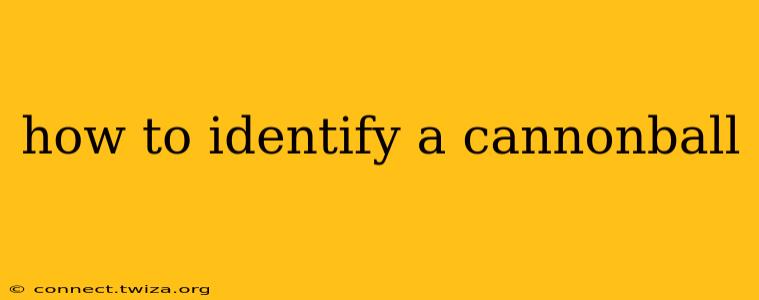Cannonballs, relics of a bygone era of naval warfare and land battles, hold a fascinating place in history. Identifying a genuine cannonball, however, requires a keen eye and understanding of their characteristics. This guide will equip you with the knowledge to distinguish a true cannonball from look-alikes.
What are the Key Characteristics of a Cannonball?
Authentic cannonballs share several defining features. Understanding these characteristics is crucial for accurate identification.
-
Shape and Size: Cannonballs are, ideally, perfectly spherical. While imperfections due to casting methods are common, significant deviations from a sphere suggest a different origin. Sizes varied considerably, ranging from small, handheld projectiles to massive ones requiring specialized equipment to load.
-
Material: Historically, iron was the primary material for cannonballs. While some experimentation with other metals occurred, iron remains the most common composition. This means you should expect a significant weight relative to its size. You can often identify the iron through rust or the characteristic dark grey-brown color of weathered iron.
-
Surface Texture: The surface of a cannonball will typically show signs of wear and tear. Casting marks, pitting from corrosion, and sometimes even embedded debris from the battlefield can be visible. A completely smooth surface might indicate a modern replica or a different object altogether.
-
Weight: The weight is directly proportional to the size. A larger cannonball will obviously weigh much more than a smaller one. A surprisingly lightweight "cannonball" should raise suspicion.
How to Distinguish a Cannonball from Similar Objects?
Many objects might superficially resemble cannonballs. Here's how to tell the difference:
Are all round metal objects cannonballs?
No. Many other objects, such as old weights, decorative spheres, or even naturally formed rocks, can resemble cannonballs. Careful examination of the material, surface texture, and size is essential to avoid misidentification.
What are the common materials used in making cannonballs besides iron?
While iron was the most common material, stone cannonballs were also used, particularly in earlier periods of warfare. These would be significantly heavier than iron cannonballs of comparable size. Other materials, such as lead, were less common due to cost and other logistical factors.
How can I tell if a cannonball is made of iron?
A magnet is your best friend here. Iron cannonballs will be strongly attracted to a magnet. This simple test can quickly eliminate many potential look-alikes. However, be aware that heavy rust can sometimes slightly impede the magnetic attraction.
What if I find something that looks like a cannonball but is made of stone?
A stone sphere, especially one showing signs of wear or impact damage, could potentially be a stone cannonball from an earlier period of warfare. However, further research and expert opinion might be needed to confirm its origin.
How can I tell if it’s a replica or a genuine artifact?
Identifying a replica is challenging, as modern replicas can be made with impressive accuracy. However, the telltale signs often lie in subtle differences: the quality of the casting, the level of detail, or the presence of any modern manufacturing marks. If you have doubts about authenticity, consult a history expert or museum curator.
Further Research and Confirmation
Once you've examined the object using the guidelines above, further steps can aid in accurate identification:
-
Consult with experts: If you're unsure about your findings, contact a local historical society, museum, or archaeologist for expert evaluation.
-
Conduct research: Research the history of the location where you found the potential cannonball. The presence of historical battle sites or fortifications can significantly increase the probability of finding a genuine cannonball.
Identifying a cannonball requires a methodical approach. Combining visual inspection, material analysis, and historical context significantly improves your chances of correctly identifying this intriguing piece of history. Remember, if in doubt, seek professional help to confirm your findings.
